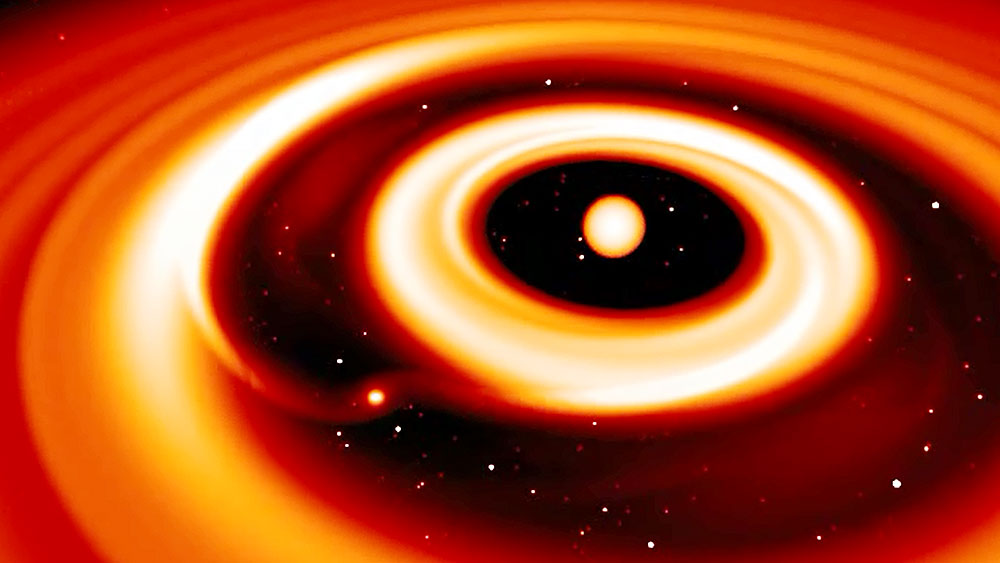How giant planets form
Astronomers set up two theories explaining how gaseous giant planets like Jupiter or Saturn could be born. A bottom-up formation mechanism states that first, a solid core is aggregated of roughly ten times the size of the Earth. «Then, this core is massive enough to attract a significant amount of gas and keep it,» explains Judit Szulágyi, post-doctoral fellow at the ETH Zürich and member of the Swiss NCCR PlanetS. The second theory is a top-down formation scenario: Here the gaseous disk around the young star is so massive, that due to self-gravity of the gas-dust, spiral arms are forming with clumps inside. Then, these clumps collapse via their own gravity directly into a gaseous planet, similar to how stars form. The first mechanism is called «core-accretion», the second one «disk instability». In both cases, a disk forms around the gas-giants, called the circumplanetary disk, which will serve as a birth-nest for satellites to form.
To find out which mechanism actually takes place in the Universe, Judit Szulágyi and Lucio Mayer, Professor at the Center for Theoretical Astrophysics and Cosmology at UZH, simulated the scenarios on Piz Daint supercomputer at the Swiss National Supercomputing Centre (CSCS) in Lugano. «We pushed our simulations to the limits in terms of the complexity of the physics added to the models,» explains Judit Szulágyi: «And we achieved higher resolution than anybody before.»
In their studies published in the «Monthly Notices of the Royal Astronomical Society» the researchers found a big difference between the two formation mechanisms: In the disk instability scenario the gas in the planet’s vicinity remained very cold, around 50 Kelvins, whereas in the core accretion case the circumplanetary disk was heated to several hundreds of Kelvins. «The disk instability simulations are the first that can resolve the circumplanetary disk around multiple protoplanets, using tens of millions of resolution elements in the computational domain. We exploited Piz Daint to accelerate the calculations using Graphics Processing Units (GPUs)” adds Mayer.
This huge temperature difference is easily observable. «When astronomers look into new forming planetary systems, just measuring the temperatures in the planet’s vicinity will be enough to tell which formation mechanism built the given planet,» explains Judit Szulágyi. A first comparison of the calculated and observed data seems to favour the core accretion theory. Another difference that was expected didn’t show up in the computer simulation. Before, astrophysics thought that the circumplanetary disk significantly differs in mass in the two formation scenarios. «We showed that this is not true,» says the PlanetS member.
In a second study, Judit Szulágyi collaborated with Christoph Mordasini (University of Berne).
